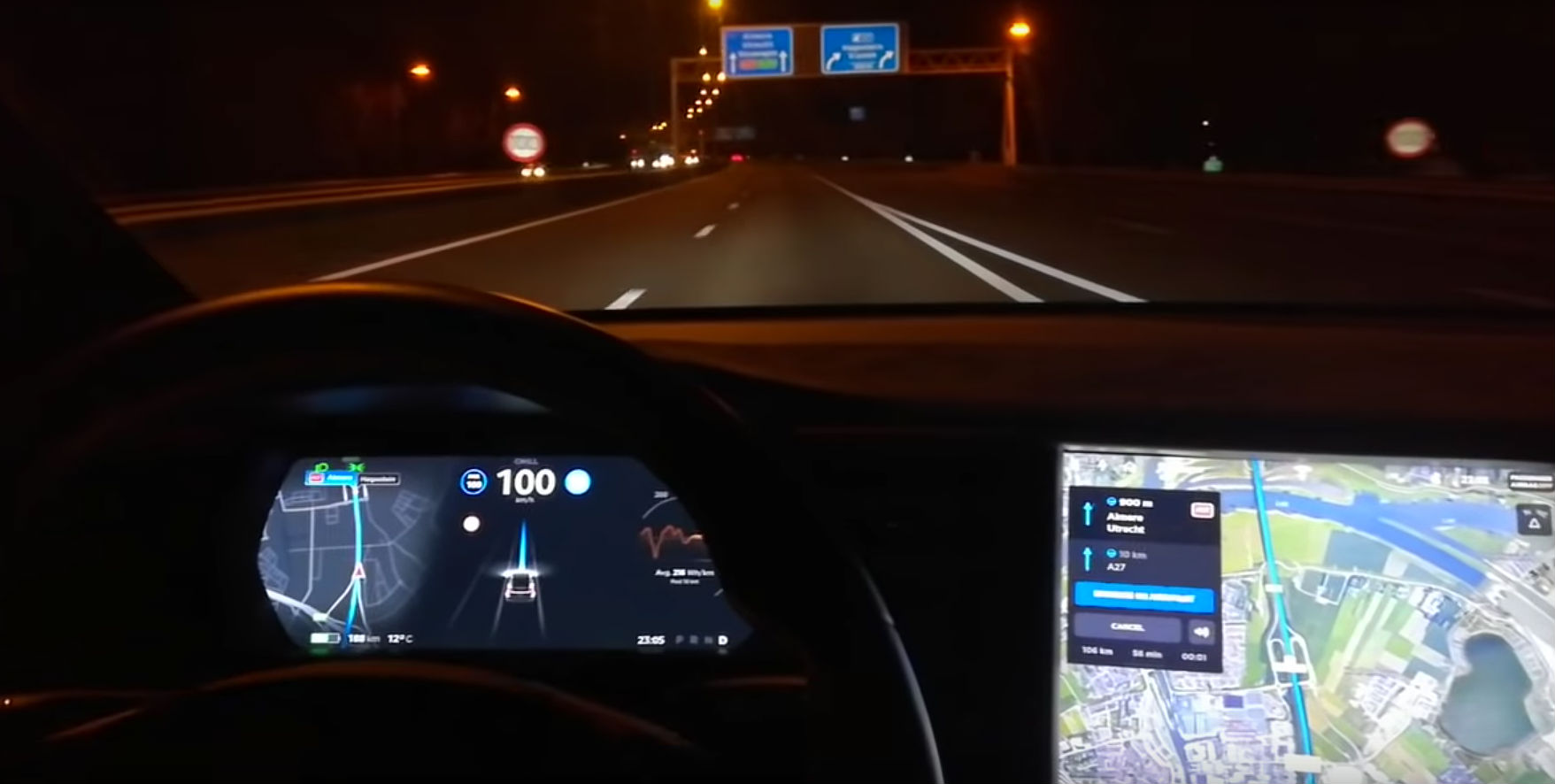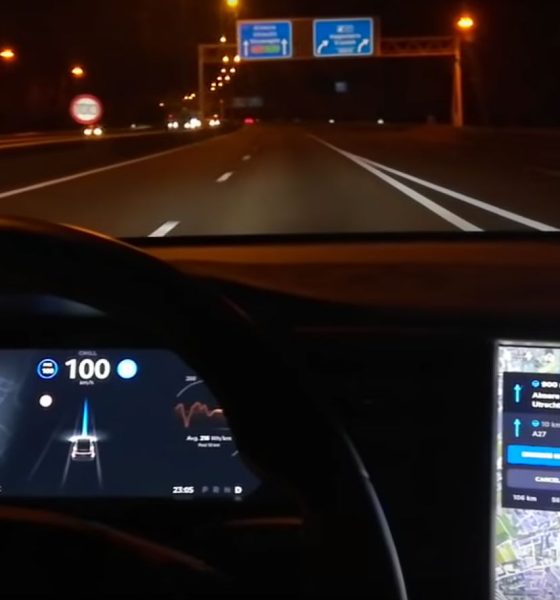

News
Tesla MIT study concludes that drivers maintain vigilance when using Autopilot
Tesla owners using Autopilot are highly engaged when driving with the feature despite fears to the contrary, according to a study recently published by scientists at MIT titled Human Side of Tesla Autopilot: Exploration of Functional Vigilance in Real-World Human-Machine Collaboration.
The data used in the study was generated from the over 1 billion miles driven by Tesla owners since its activation in 2015, about 35% of which were determined to be assisted by Autopilot. Of these, 18,928 disengagements of Autopilot were annotated, which indicated instances when drivers took over during challenging driving situations. Overall, the numbers demonstrate a high rate of driver vigilance.
Tesla has provided a unique opportunity to form a baseline for objective, representative analysis of real-world use of Autopilot, as stated in the study:
“Due to its scale of deployment and individual utilization, [Tesla’s] Autopilot serves as perhaps the currently best available opportunity to study and understand human interaction with AI assisted vehicles ‘in the wild’…naturalistic driving research can now begin investigating and identify both promising and concerning trends in drivers’ behavioral patterns in the context of Autopilot.”

As automation has expanded over the last several decades, a pattern of overtrust in reliable automated systems has been shown by human behavior research studies. In the context of driving scenarios where property damage, injury, or death are possible consequences, the concern with the transition to semi-autonomous systems relying on driver input to function safely is obviously significant. The results of the MIT study are therefore promising, initially showing an approach to automation in driving systems that’s more careful than other areas.
“The two main results of this work are that (1) drivers elect to use Autopilot for a significant percent of their driven miles and (2) drivers do not appear to over-trust the system to a degree that results in significant functional vigilance degradation in their supervisory role of system operation,” the MIT scientists concluded.
The study further notes that more research will be needed as more data becomes available and more familiarity grows with Autopilot’s features.
Tesla has received a fair amount of criticism and attention whenever an accident involves one of its cars, especially if Autopilot was engaged around the time of the event. However, Tesla consistently maintains its position that the feature is not yet fully autonomous and requires drivers to both pay attention and intervene when necessary while Autopilot is in operation. The program is additionally equipped with several alerts which give drivers audio and visual warnings if hands are not detected on the steering wheel, something found to have been ignored in some prior crash events, playing into concerns the MIT study sought to address.

Beginning in Q3 2018, Tesla has been releasing quarterly Vehicle Safety Reports providing updated numbers for vehicle incidents occurring both when Autopilot was engaged and when the driver-assist feature was deactivated. For Q3, the company reported one accident or crash-like event for every 3.34 million miles driven with Autopilot active and one event for every 1.92 million miles driven with Autopilot disengaged. In Q4 2018, those numbers dropped slightly, possibly due to winter conditions, to one accident for every 2.91 million miles driven with Autopilot engaged and one accident for every 1.58 million miles driven without.
By comparison, the National Highway Traffic Safety Administration’s (NHTSA) most recent data at the time showed a crash event every 436,000 miles, a figure which includes all vehicles in the US whether or not the cars are equipped with driving enhancement software. Tesla’s numbers further include both accidents that have occurred and “near-misses”, and the NHTSA’s figures only include accidents that actually transpired.
Along with touting a correlation between lower accident rates and Autopilot being engaged, Tesla also maintains its title of producing the safest cars in the world based on NHTSA test results.

Elon Musk
Elon Musk’s X will start using a Tesla-like software update strategy
The initiative seems designed to accelerate updates to the social media platform, while maintaining maximum transparency.

Elon Musk’s social media platform X will adopt a Tesla-esque approach to software updates for its algorithm.
The initiative seems designed to accelerate updates to the social media platform, while maintaining maximum transparency.
X’s updates to its updates
As per Musk in a post on X, the social media company will be making a new algorithm to determine what organic and advertising posts are recommended to users. These updates would then be repeated every four weeks.
“We will make the new 𝕏 algorithm, including all code used to determine what organic and advertising posts are recommended to users, open source in 7 days. This will be repeated every 4 weeks, with comprehensive developer notes, to help you understand what changed,” Musk wrote in his post.
The initiative somewhat mirrors Tesla’s over-the-air update model, where vehicle software is regularly refined and pushed to users with detailed release notes. This should allow users to better understand the details of X’s every update and foster a healthy feedback loop for the social media platform.
xAI and X
X, formerly Twitter, has been acquired by Elon Musk’s artificial intelligence startup, xAI last year. Since then, xAI has seen a rapid rise in valuation. Following the company’s the company’s upsized $20 billion Series E funding round, estimates now suggest that xAI is worth tens about $230 to $235 billion. That’s several times larger than Tesla when Elon Musk received his controversial 2018 CEO Performance Award.
As per xAI, the Series E funding round attracted a diverse group of investors, including Valor Equity Partners, Stepstone Group, Fidelity Management & Research Company, Qatar Investment Authority, MGX, and Baron Capital Group, among others. Strategic partners NVIDIA and Cisco Investments also continued support for building the world’s largest GPU clusters.
News
Tesla FSD Supervised wins MotorTrend’s Best Driver Assistance Award
The decision marks a notable reversal for the publication from prior years, with judges citing major real-world improvements that pushed Tesla’s latest FSD software ahead of every competing ADAS system.

Tesla’s Full Self-Driving (Supervised) system has been named the best driver-assistance technology on the market, earning top honors at the 2026 MotorTrend Best Tech Awards.
The decision marks a notable reversal for the publication from prior years, with judges citing major real-world improvements that pushed Tesla’s latest FSD software ahead of every competing ADAS system. And it wasn’t even close.
MotorTrend reverses course
MotorTrend awarded Tesla FSD (Supervised) its 2026 Best Tech Driver Assistance title after extensive testing of the latest v14 software. The publication acknowledged that it had previously criticized earlier versions of FSD for erratic behavior and near-miss incidents, ultimately favoring rivals such as GM’s Super Cruise in earlier evaluations.
According to MotorTrend, the newest iteration of FSD resolved many of those shortcomings. Testers said v14 showed far smoother behavior in complex urban scenarios, including unprotected left turns, traffic circles, emergency vehicles, and dense city streets. While the system still requires constant driver supervision, judges concluded that no other advanced driver-assistance system currently matches its breadth of capability.
Unlike rival systems that rely on combinations of cameras, radar, lidar, and mapped highways, Tesla’s FSD operates using a camera-only approach and is capable of driving on city streets, rural roads, and freeways. MotorTrend stated that pure utility, the ability to handle nearly all road types, ultimately separated FSD from competitors like Ford BlueCruise, GM Super Cruise, and BMW’s Highway Assistant.
High cost and high capability
MotorTrend also addressed FSD’s pricing, which remains significantly higher than rival systems. Tesla currently charges $8,000 for a one-time purchase or $99 per month for a subscription, compared with far lower upfront and subscription costs from other automakers. The publication noted that the premium is justified given FSD’s unmatched scope and continuous software evolution.
Safety remained a central focus of the evaluation. While testers reported collision-free operation over thousands of miles, they noted ongoing concerns around FSD’s configurable driving modes, including options that allow aggressive driving and speeds beyond posted limits. MotorTrend emphasized that, like all Level 2 systems, FSD still depends on a fully attentive human driver at all times.
Despite those caveats, the publication concluded that Tesla’s rapid software progress fundamentally reshaped the competitive landscape. For drivers seeking the most capable hands-on driver-assistance system available today, MotorTrend concluded Tesla FSD (Supervised) now stands alone at the top.
News
Elon Musk’s Grokipedia surges to 5.6M articles, almost 79% of English Wikipedia
The explosive growth marks a major milestone for the AI-powered online encyclopedia, which was launched by Elon Musk’s xAI just months ago.

Elon Musk’s Grokipedia has grown to an impressive 5,615,201 articles as of today, closing in on 79% of the English Wikipedia’s current total of 7,119,376 articles.
The explosive growth marks a major milestone for the AI-powered online encyclopedia, which was launched by Elon Musk’s xAI just months ago. Needless to say, it would only be a matter of time before Grokipedia exceeds English Wikipedia in sheer volume.
Grokipedia’s rapid growth
xAI’s vision for Grokipedia emphasizes neutrality, while Grok’s reasoning capabilities allow for fast drafting and fact-checking. When Elon Musk announced the initiative in late September 2025, he noted that Grokipedia would be an improvement to Wikipedia because it would be designed to avoid bias.
At the time, Musk noted that Grokipedia “is a necessary step towards the xAI goal of understanding the Universe.”
Grokipedia was launched in late October, and while xAI was careful to list it only as Version 0.1 at the time, the online encyclopedia immediately earned praise. Wikipedia co-founder Larry Sanger highlighted the project’s innovative approach, noting how it leverages AI to fill knowledge gaps and enable rapid updates. Netizens also observed how Grokipedia tends to present articles in a more objective manner compared to Wikipedia, which is edited by humans.
Elon Musk’s ambitious plans
With 5,615,201 total articles, Grokipedia has now grown to almost 79% of English Wikipedia’s article base. This is incredibly quick, though Grokipedia remains text-only for now. xAI, for its part, has now updated the online encyclopedia’s iteration to v0.2.
Elon Musk has shared bold ideas for Grokipedia, including sending a record of the entire knowledge base to space as part of xAI’s mission to preserve and expand human understanding. At some point, Musk stated that Grokipedia will be renamed to Encyclopedia Galactica, and it will be sent to the cosmos.
“When Grokipedia is good enough (long way to go), we will change the name to Encyclopedia Galactica. It will be an open source distillation of all knowledge, including audio, images and video. Join xAI to help build the sci-fi version of the Library of Alexandria!” Musk wrote, adding in a later post that “Copies will be etched in stone and sent to the Moon, Mars and beyond. This time, it will not be lost.”








